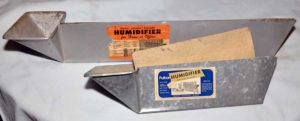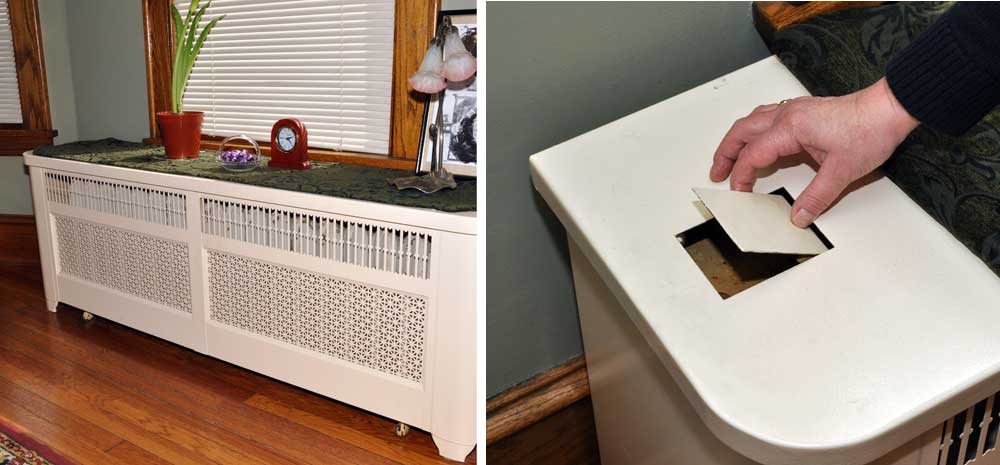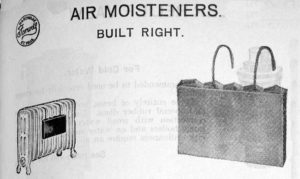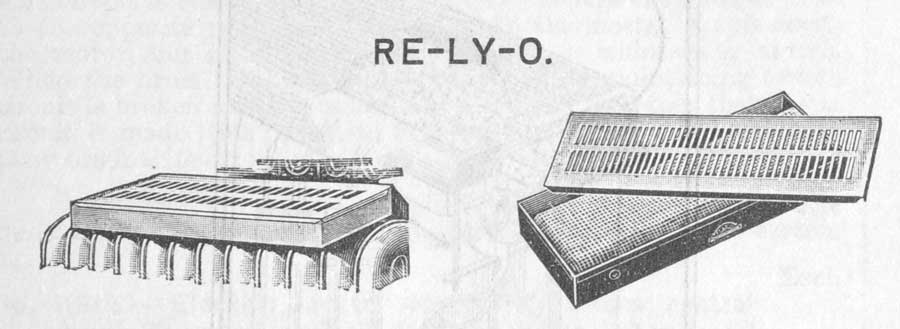Small Home Gazette, Summer 2015
Answers to Your Toughest Bungalow Questions: radiator humidifiers
A. While we don’t lack for humidity in our summers, humidifying the winter air is a good thing in our climate. It will safeguard your health, lessen nose and throat problems, preserve furniture (and that piano), and make your house more comfortable. If you have radiators, a non-electric radiator humidifier can make a difference.
For years, people have placed shallow metal or ceramic containers of water on top of radiators. The science behind this method isn’t exactly mind-boggling. The heat evaporates the water that, in turn, adds some moisture to the air. While you can always use that pan of water, the humidifier styles below will be more efficient and more secure, and some are more stylish. We suggest you start shopping for one of these devices now—some are hard to find, especially if you want vintage.
 One traditional style is an angular metal reservoir attached to a thin metal arm that slides inside (left to right) a freestanding cast-iron radiator, resting on the horizontal interior connectors. Made of galvanized sheet metal, this humidifier came in various lengths. The reservoir held about a quart of water and needed to be filled frequently.
One traditional style is an angular metal reservoir attached to a thin metal arm that slides inside (left to right) a freestanding cast-iron radiator, resting on the horizontal interior connectors. Made of galvanized sheet metal, this humidifier came in various lengths. The reservoir held about a quart of water and needed to be filled frequently.

Reproduction metal reservoir humidifier available today from Wm. A. Kilian Hardware Co. Note how it rests inside the radiator.
The Wm. A. Kilian Hardware Company in Philadelphia carries a stainless steel reproduction for about $15. It measures 19 inches wide by 4 ¼ inches tall and has a reservoir that is 6 ¾ inches deep. Check online at kilianhardware.com/radhum.html or call 215-247-0945.
There were and are styles of humidifiers that hang on the front or back of a radiator. One of yesteryear’s versions was about 12″ wide by 8″ tall and made of metal; today’s version (if you can find one—check hardware stores) is made of plastic.
There are ceramic versions of hanging humidifiers, too, that come in many shapes. Note: You will add moisture to your rooms most efficiently if you have a radiator device that is heated from both sides or is heated from below.
Another vintage style is a flat tray that rests on top of the radiator. The tray had a slotted lid that lifted off to fill with water. A 1933-34 catalog from Farwell, Ozmun, Kirk & Co. Wholesale Hardware, St. Paul, lists a nifty radiator cover and humidifying pan for $1.40. The cover sat on top of a radiator, and the pan, which extended the full width of the cover, slid out to fill. The description says “The end of the humidifier pan is finished to match perfectly with the finish of the streamlined radiator covers.”
Bill and Liz Blood, Bungalow Club members, have two large, low radiators enclosed with well-made metal covers from the 1950s. A long, built-in pan for water sits just below the top of each cover. Access is through a square, hinged opening at one end. Each pan holds over 1 gallon (which Bill says they can use up in one day at peak heating season).

A metal grill covers a low, plain radiator in the Blood’s dining room. Water is poured into a tray via an opening in the top. The top comes off for cleaning.
Reproductions of old-fashioned humidifiers that attach directly to radiators are still made but they are not easy to find. You may have some vintage humidifiers tucked away in your basement or garage, or you can look for these at antiques and salvage shops.














